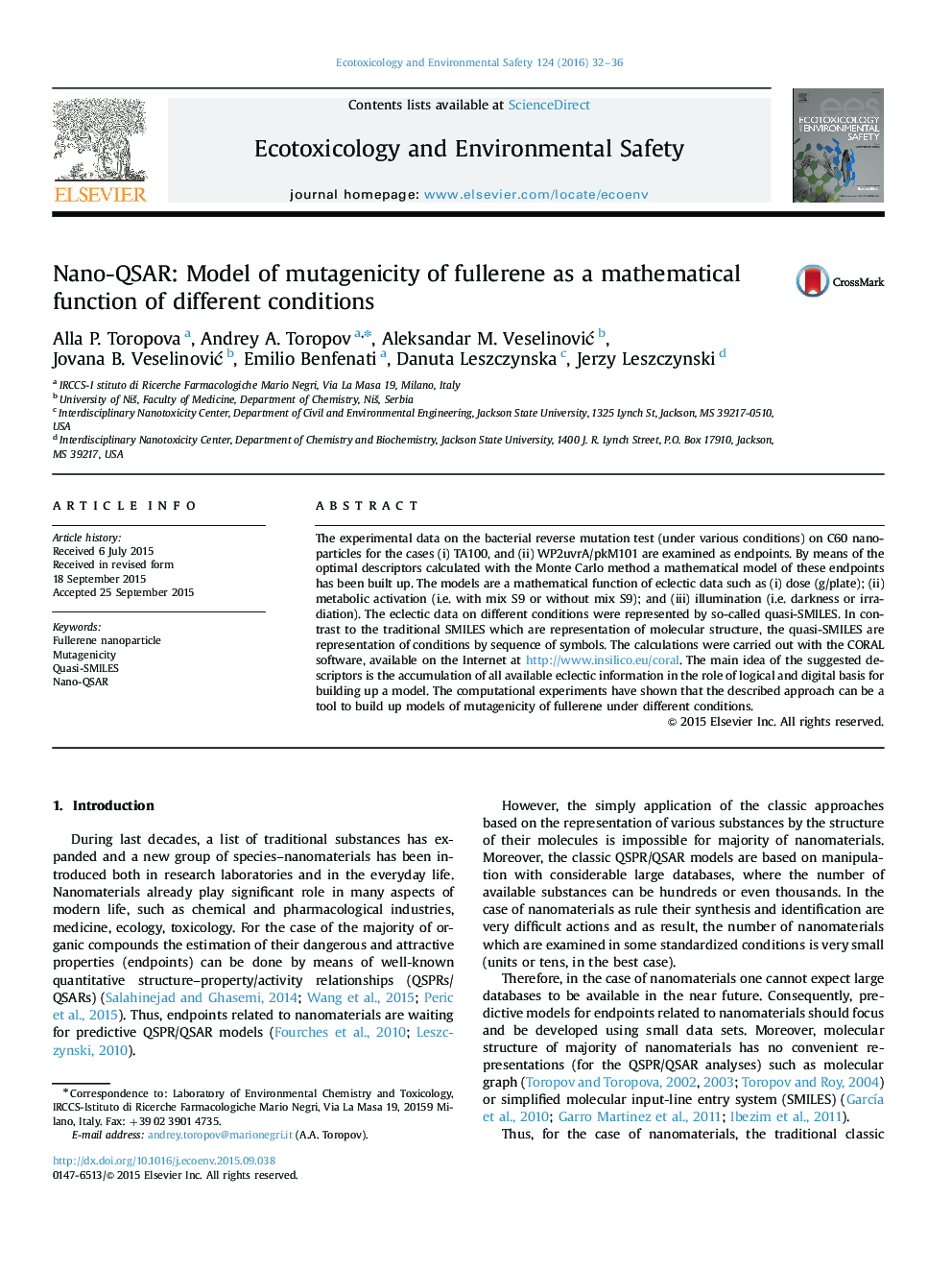| Article ID | Journal | Published Year | Pages | File Type |
|---|---|---|---|---|
| 6312020 | Ecotoxicology and Environmental Safety | 2016 | 5 Pages |
Abstract
The experimental data on the bacterial reverse mutation test (under various conditions) on C60 nanoparticles for the cases (i) TA100, and (ii) WP2uvrA/pkM101 are examined as endpoints. By means of the optimal descriptors calculated with the Monte Carlo method a mathematical model of these endpoints has been built up. The models are a mathematical function of eclectic data such as (i) dose (g/plate); (ii) metabolic activation (i.e. with mix S9 or without mix S9); and (iii) illumination (i.e. darkness or irradiation). The eclectic data on different conditions were represented by so-called quasi-SMILES. In contrast to the traditional SMILES which are representation of molecular structure, the quasi-SMILES are representation of conditions by sequence of symbols. The calculations were carried out with the CORAL software, available on the Internet at http://www.insilico.eu/coral. The main idea of the suggested descriptors is the accumulation of all available eclectic information in the role of logical and digital basis for building up a model. The computational experiments have shown that the described approach can be a tool to build up models of mutagenicity of fullerene under different conditions.
Keywords
Related Topics
Life Sciences
Environmental Science
Environmental Chemistry
Authors
Alla P. Toropova, Andrey A. Toropov, Aleksandar M. VeselinoviÄ, Jovana B. VeselinoviÄ, Emilio Benfenati, Danuta Leszczynska, Jerzy Leszczynski,
